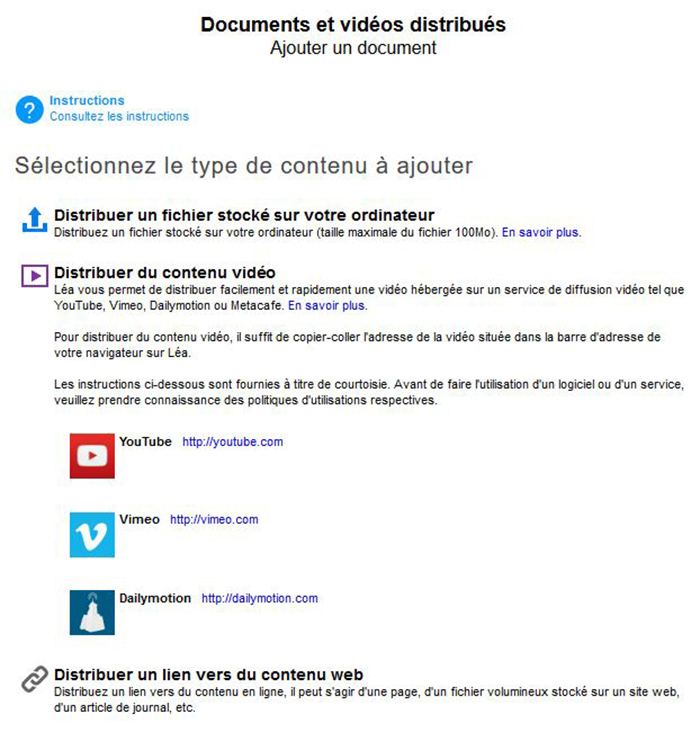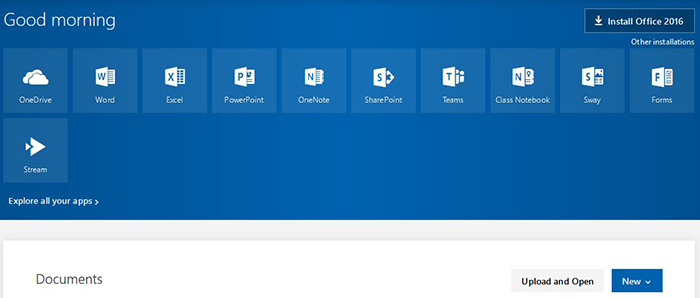Microsoft Announces Stream – A Hosting Option for Your Pedagogical Videos
In June 2017, Microsoft announced the general availability of a video hosting service called Stream in its Office 365 ecosystem. Given that a number of teachers, staff and students in the Quebec college network have subscriptions to this ecosystem, new possibilities are available for teaching and learning.
What is Microsoft Stream?
According to the Microsoft Stream Frequently Asked Questions (FAQ) page, “Microsoft Stream is an Enterprise Video service where people in an organization can upload, view, organize and share videos securely.” For those teachers that are currently using YouTube and Vimeo to host pedagogical videos, you might want to have a look into Microsoft Stream.
A video overview about Microsoft Stream
What are some of the advantages of using Stream?
Given that a number of colleges are already Office 365 subscribers, there is no extra cost to get started with posting videos on Stream. With some colleges providing up to a 1 Terabyte quota for Office 365 to subscribers, there is a significant amount of room for hosting pedagogical videos and other digital assets.
Microsoft is highlighting the fact that there is automatic text-to-speech recognition capability within Stream, which means that creation of closed captioning is facilitated. This is great news for students with hearing impairments, and for teachers aspiring to incorporate more Universal Design for Learning approaches within their teaching practice. Microsoft points out that this capability also helps to improve searching of videos.
Microsoft also points out that Stream works with mobile devices. According to its Stream FAQ page: “Microsoft Stream is available on mobile browsers with full functionality across all platforms (iOS, Android, Windows Phone).”
Microsoft seems to have big plans for Stream, which will integrate well with other collaborative applications in Office 365, like Sharepoint and Microsoft Teams. For teachers, the possibility to restrict access to specific groups you have created in the Office 365 ecosystem seems to be an interesting feature.
How can I use the service with my students?
Video content hosted on Stream can be used for many different purposes – most of which can also be accomplished using video-sharing websites such as YouTube and Vimeo:
- Video tutorials (e.g. as part of a flipped learning approach)
- Screencasts (e.g. to explain an instruction sheet, or to give oral feedback on an assignment)
- Rights-free video material (e.g. for comprehension activities)
- Recorded student presentations (e.g. for self- assessment or peer assessment)
That said, Stream has several features that make it especially interesting for educational use:
- Users can control the video’s playback speed. (0.5x slower to 2x faster). This may be useful for special needs students as well as second-language learners and users.
- The video owner can easily upload or automatically generate subtitles. This feature not only facilitates comprehension, it also enables users to search the captions for keywords – within specific videos, but also across all your shared video content. In this way, students can quickly find the explanation of a concept in a tutorial when reviewing for an evaluation, for instance.
- Authorized users can comment on videos; these comments can also be associated with a specific timestamp. This is particularly useful for students to discuss their understanding of the presented content with their peers, or to ask questions associated with specific segments of a video.
- Video access can be controlled by sharing content with specific users, or adding video files to groups or channels. This makes it easy to share, for instance, a feedback screencast with an individual student, a recorded presentation with a team for peer feedback, and a video tutorial with the entire class.
- Since students automatically have an account if your institution subscribes to Office 365, they do not need to set up new accounts or passwords. This takes away an important pain point when managing your students online.

The Stream video commenting feature
What are Stream’s limitations?
As of the time of writing (November 1st, 2017), Microsoft Stream does not have the ability to stream live events, according to the Stream FAQ. This means it may not be suitable for inviting special guests speakers into your classroom or broadcasting events.
Although Stream video can easily be shared with users on the platform itself, via email or using an embed code (for instance, on Moodle), the Omnivox (Léa) platform used by many colleges does not yet support the embedded distribution of videos hosted on Stream. It is, however, possible to distribute a URL that opens the appropriate Stream page in a new window.

Omnivox allows teachers to add video content from YouTube, Vimeo and Dailymotion directly to the platform. Stream requires adding a link to an external webpage.
Finally, the analytics capabilities of the platform also seem somewhat limited, and users have asked for more sophisticated metrics for usage of the videos to be integrated.
How do I get it?
You may already have access to Microsoft Stream. Log in to your Office 365 account, and click on “Explore all your apps” to see all of your Office Tools:

Explore all your apps in your MicrosoftOffice 365 account.

The Microsoft Stream button looks like this
Here is a short tutorial on how to upload your first video to Stream.
If you don’t have access to Office 365, Microsoft is offering a free trial for 90 days.
Important Information for Office Mix for PowerPoint Users
In September 2017, Julie Wong and Ryan Moon published a story on Office Mix, an easy means of creating screencasts. The Office Mix Preview period will come to a close in 2018 and Microsoft is asking users to migrate their mixes to Stream. The functionality that made these video mixes with PowerPoint will soon evolve to work with Stream, according to Microsoft. However, some of the interactive features that were provided in Office Mix are not yet available in Microsoft Stream (like quizzes). In a recent community e-mail, Microsoft stated:
Mixes migrated to Stream will not include analytics data, quizzes or apps. However, over time these mixes will become interactive again.
In the same e-mail, Microsoft hinted that they are working on a unified experience:
Blockquote “Over time, we will be adding the best experiences of Office Mix across PowerPoint, Stream, and Forms to make it even easier for you to create and share interactive online videos.“
For those of you who have already been working with Office Mix, Microsoft has provided a transition page to facilitate the migration process.
Further exploration
For more information on Microsoft Stream, you can check out the blog post announcing its release, the Microsoft Stream product page or its FAQ. There is also a playlist of videos with tutorials and feature demonstrations that you may find useful.
Wishing you a fruitful exploration of this new tool! Please feel free to comment on your experiences in the comments section below.

